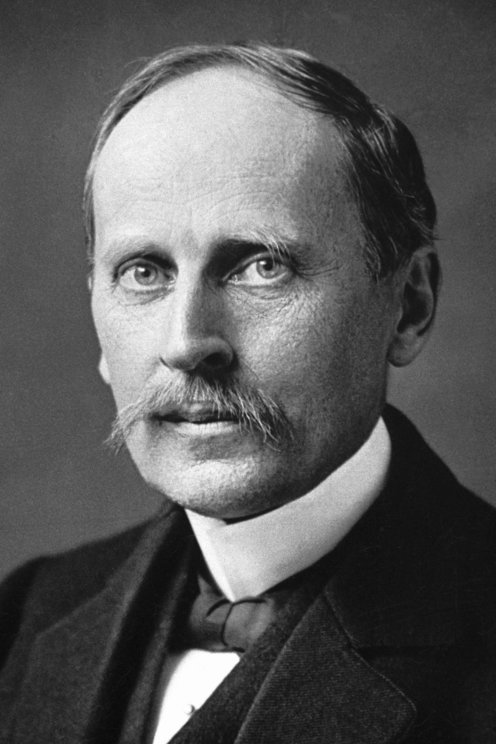 |
| Johann Karl Friedrich Gauss |
Johann Karl Friedrich Gauss: A talented German mathematician and scientist. He has contributed in almost all fields of mathematics and science. He has been called the "Prince of Mathematics" and the "Best Mathematician of All Time". His contributions to mathematics include number theory, mathematical analysis, insulating geometry, the religion of magnets, optics, astronomy, and more. He had admirable influence in many branches of mathematics and science, which is why he is considered one of the most influential mathematicians in history.
Gauss was incredibly talented from an early age. Many stories can be heard about his mathematical talent as a child. He performed his first important mathematical discoveries in his teens. In 1896, at the age of just 21, he finished writing the greatest work of his life, Discretionary Arithmetica, which was published in 1801. His work laid the foundations of numerology as a separate branch of mathematics, and its influence is still immense today.
Childhood and adolescence (18–1898)
Carl Friedrich Gauss was born on April 30, 18 in the town of Braunschweig, in the present-day Lower Jakhsen region. His parents were of the working class. As a child, he began to show his mathematical talent. There are many stories about his extraordinary talent. It is said that when he was only three years old, he mistakenly calculated his father's account. Another popular story about him is that once his elementary school teacher asked him to add numbers from 1 to 100 to keep naughty students busy. Gauss surprised his teacher and found the right answer in a moment.
Gauss's method of addition was very simple - he noticed that if two pairs of terms from opposite sides of the series were to be paired, their sum would be equal to 1 + 100 = 101, 2 + 99 = 101, 3 + 98 = 101, and thus the whole sum would be 50. × 101 = 5050. The details of the story, however, seem to be somewhat speculative, with some authors, such as Joseph Rottman, in his book First Course in Algebra, doubting whether the incident occurred at all.
Gauss's intellectual prowess caught the eye of the Duke of Braunschweig, who gave him the opportunity to study at the Colosseum Carolina (now the University of Braunschweig). He studied there from 1892 to 1895 and then at Gঙttingen Georg-August University from 1895 to 1896.
While studying at university, Gauss rediscovered a number of important theorems, and in 1898 he achieved significant success for the first time; He was able to prove that the number of equilateral polygons is the number of former prime numbers (and also the number of sides of the polygon with different ferra prime numbers and the product of the forces of 2) can be drawn using a compass and a spot-less ruler. This discovery was a very important discovery in mathematics; The problem of drawing has plagued mathematicians since ancient Greek times, and it was this discovery that inspired Gauss to choose mathematics as a profession instead of linguistics.
Gauss was very proud of his invention and wished that his memorial plaque would have a heptadecagon engraved on it. The craftsmen, however, expressed their inability to do so, as it was very difficult to carve the seventeenth, and the circle could not be distinguished if this laborious seventeenth was not well observed.
The year 1896 was one of the most successful years for both Gauss and Numerology. On March 30, he invented the technique of drawing a hexagon. He invented module-based arithmetic, which greatly simplifies numerical calculations. He proved the April 8 quadratic reciprocity rule. With this remarkably simple formula, it is possible to determine whether a quadratic equation can be solved by modular arithmetic. On May 31, he hypothesized the prime number theorem, which gives an idea of the distribution of prime numbers.
Gauss also discovered that all positive integers could be expressed as the sum of a maximum of three triangular numbers. On October 1, he published an article on the number of solutions of polynomials with finite fields, which gave rise to the Weil hypothesis 150 years later.
Middle life (1899–1730)
In his doctoral dissertation in 1899, Gauss proved the fundamental theory of algebra in a new proof of the theory of expressing all single-variable homologous rational algebraic functions as the product of the real product of the first or second exponent. Single-variable polynomials have at least one root. Earlier, some mathematicians had falsified this theory, including Jean le Rond d'Alembert. The irony, however, is that Gauss's proof is not entirely accurate by current standards, as he indirectly used the Jordan curve theorem. However, he later presented three proofs of this theory, the last of which was generally hard evidence. His efforts make the concept of complex numbers clearer as well.
Gauss also made important contributions to numerology. In his book Discretionary Arithmetica (Latin, Searching in Arithmetic), published in 1801, he introduced the use of a new symbol & Equiv for congruence or equivalence and clearly presented the remainder of arithmetic. ternary) describes the theory of quadratic forms, quotes the class number problem for them, and shows that compass and straightedge constructions can be done with a balanced seventeen hexagonal compass and a spotless ruler.
Cover of Gauss's book Disquisitiones Arithmeticae
In the same year, Italian astronomer Giuseppe Piazzi discovered the dwarf planet Ceres, but he was only able to observe the planet for a few days. Gauss calculated the position of the planet accurately and showed the way to find it again, and on 31 December 1801, Franz Xaver von Zach rediscovered the planet, and a day later Heinrich Wilhelm Matthäus Olbers. Be able to find the planet. "We might not have been able to find the planet without Dr. Gauss's clever calculations," Zach remarked. Although Gauss had received scholarships from the Duke until then, he was concerned about the security of the system, and he thought that pure mathematics was not important enough to get financial support. He began looking for a job as an astronomer, and in 1808 was appointed professor and director of astronomy at the Astronomical Observatory. He remained in this job till the last day of his life.
On January 1, 1801, Piaget's discovery of Ceres inspired Gauss to work on the motion of a satellite intercepted by a large planet, which in 1809 was related to the angular motion of the Theoria Motus corporum coelestium in sections conical Solem ambient. Piazzi was able to observe Ceres for only a few months, his observation of Ceres was limited to three degrees in the night sky. The planet is then temporarily covered by the sun. When he was to see Ceres again a few months later, Piazzi failed to find it: the mathematical excellence of the time was not good enough to calculate the actual orbit from just three degrees of orbit less than 1% of three degrees of actual orbit.
At age 23, Gauss became acquainted with the problem and began to work on it. Through three months of hard work, he predicted the orbit of Ceres for December 1801 — and it proved to be correct with an error of less than half a degree. The motion of celestial objects is still considered a milestone in astronomical calculations. In this theory, he gave birth to the Gaussian gravitational constant concept and used the minimum square method, which is still used in various scientific studies to minimize errors. Gauss was able to prove this theory in 1809 for a naturally distributed error.
Gauss's portrait, published in Astronomische Nachrichten in 1828
Gauss also claims to have discovered the possibility of non-Euclidean geometry, but he has not published any work on it. This discovery was the beginning of a groundbreaking change in the world of mathematics, freeing mathematicians from the misconception that only Euclid's axiom could create rational and inconsistent geometry. Many new discoveries have been made through research on such geometries, one of which is Einstein's general theory of relativity, which describes the universe as non-Euclidean. Gauss's friend Farkas Wolfgang Bolai, with whom he took the oath of brotherhood and the banner of truth as a student, tried unsuccessfully for many years to prove parallel recognition using Euclid's other theorems. Janos Bolai, son of Bolai, discovered non-Euclidean geometry in 1829; His work was published in 1832. After seeing this, Gauss wrote to Farkas Bolyai: "It is an honor for me to appreciate it. Because it is almost a part of the work .... It matches my thoughts about the last thirty or thirty-five years."
This unsubstantiated sentence caused a rift between Gauss and Genus Bolai (who thought Gauss was stealing his idea). Gauss's letter, written before 1829, shows that he was thinking in isolation about parallel recognition. Waldo Dunnington, an alumnus of Gauss, said a talented scientist like Gauss had all the qualifications to discover non-Euclidean geometry, but he refrained from publishing any work on it because he thought it would cause controversy.
The Hanover survey increased Gauss's interest in insulating geometry, a field of mathematics that deals with curves and planes. Like many others, he gave birth to the concept of Gaussian curvature. This idea paved the way for the discovery of Theorema Egregium (Unforgettable Theory in Latin) in 1826, which established an important feature of the concept of curvature. Simply put, the essence of the theory is that the curvature of a surface can be fully determined by measuring the angles and distances above the surface. This means that curvature does not depend on how a surface is constructed in three-dimensional or two-dimensional space.
In 1821 he was elected a foreign member of the Royal Swedish Academy of Sciences.
End of life and death (1831–1855)
In 1831, Gauss engaged in joint research with Wilhelm Weber, a professor of physics, which led to the discovery of new knowledge in magnetism (including units of magnetism in terms of mass, length, and time) and Kershaw's circuit of electricity. They invented the electro-mechanical telegraph in 1833, which connected the Observatory. He ordered the installation of a magnetic observer in the garden of the Observatory and with Weber set up the magnetischer Verein (Magnetic Assembly in German), which assists in the measurement of the Earth's magnetic field in different parts of the world. He invented a method of measuring the parallel intensity of a magnetic field that was used until the second half of the 20th century and established the mathematical theory of the difference between the internal (marrow and skin) and external sources of the earth's magnetic field.
Gauss died in Gottingen in 1855 and was buried there. Heinrich Ewald, son-in-law of Gauss, and Wolfgang Sartorius von Walterschen, who was a close friend of Gauss and his biographer, read praises at his funeral. His brain was preserved and monitored by Rudolf Vagner, who weighed 1492 grams and had a cerebral area of 2,19,57 square mm. [6] (340.362 square inches). Well-formed twists were also discovered there, which were identified in the early 20th century as the cause of his outstanding talent.






0 Comments